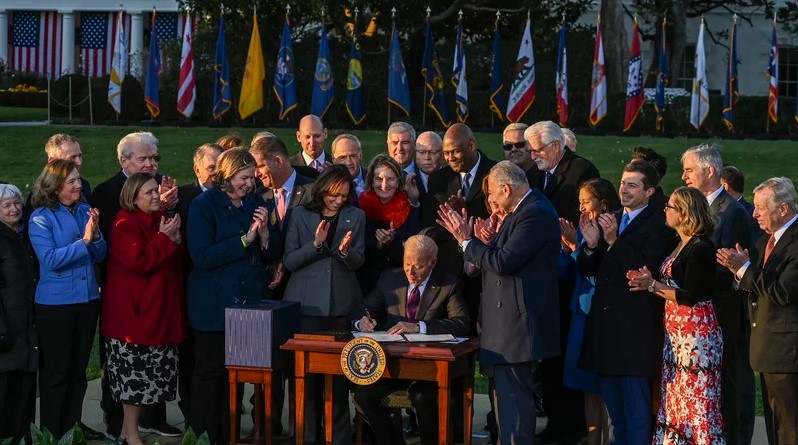On Wednesday, the Biden Administration unveiled a significant investment of nearly $3.5 billion aimed at enhancing the United States’ electric grid.
This funding, drawn from the Bipartisan Infrastructure Law signed by President Joe Biden in November 2021, represents the first installment of the $10.5 billion allocated through the Grid Resilience and Innovation Partnerships (GRIP) Program.
The $3.46 billion will support 58 projects across 44 states, including the development of around 400 microgrids. These efforts are expected to integrate over 35 gigawatts of clean energy into the grid, a substantial boost considering that a mid-sized city requires about one gigawatt, according to Bill Gates’ book, “How to Avoid a Climate Disaster.”
Private sector investments will add $4.7 billion, bringing the total investment to $8.16 billion. Jennifer M. Granholm, Secretary of the U.S. Department of Energy, highlighted the urgency of the upgrade, noting that the U.S. grid is the world’s largest connected machine, with significant portions installed before 1970.

Mitch Landrieu, White House Infrastructure Implementation Coordinator, emphasized that the aging grid is increasingly vulnerable to extreme weather events and climate change impacts.
An outdated grid can fail during heatwaves, floods, and severe storms, affecting daily life and economic activities.
The program attracted substantial interest, with 700 concept papers submitted and 58 projects selected. Examples include Georgia’s $507 million investment in battery storage and microgrids, Louisiana’s collaborative efforts to enhance emergency response through microgrid development, and Oregon’s improvements to increase solar energy transmission and bolster grid resilience against fires and floods.
Additionally, funding will support inter-regional transmission projects across multiple states and upgrades for 39 rural electric co-ops to enhance wildfire resilience. The International Energy Agency’s recent report underscores the global need for expanded and improved transmission lines to meet climate goals, projecting an annual investment of over $600 billion by 2030.

